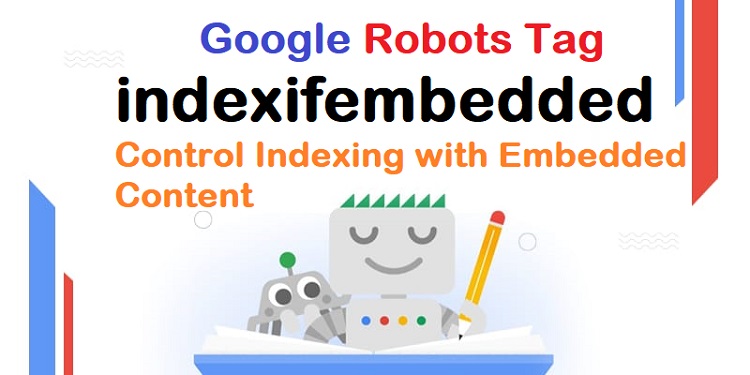As stated in the header, Google has developed a new robots tag that gives websites greater control over the information that they want to get indexed and show up in the SERPs of pertinent queries.
As well as the name of the new robots tag is “indexifembedded.” This element allows websites to tell Google what information to index and where to place it in the search results.
In other terms, even if you use a noindex tag to prevent Google from entering or indexing a certain URL, you may still use an indexifembedded element to let it to do so when the material is embedded on another website.
While companies could want their material indexed when it is embedded on other people’s websites, Google claims that they “don’t necessarily want their media pages crawled on their own.” Many content creators will benefit from this because they frequently encounter the same problems.
These are extremely complex and delicate subjects, thus in order to comprehend this, you must be well-versed in the subject. Therefore, you should first study in an SEO Course in order to accurately manage this situation.
Usages of indexifembedded Tag
You also need to keep in mind that not all content publishers can benefit from this tag because it works best when the material in question has a unique URL that can be used to embed it.
For instance, if a podcast producer posts each episode of their podcast on their website with a unique URL, then those links would only point to that particular file.
Additionally, material from the website of the content provider might be embedded on independent third-party websites. So, using those links will make it simple for a third-party website to refer to a certain podcast episode.
If a podcast publisher does not want their media URLs to display in Google search results, they may simply do this by utilising a noindex tag.
The main problem with the noindex tag, however, is that it would make it impossible for other websites to embed media on their pages.
This is a reference to the fact that users would not be able to utilise the noindex tag if the publisher permits embedding. But now that companies have the indexifembedded tag, they can decide which material is indexed and which is not.
Media publishers that wish to utilise it must include an iframe or a similar HTML tag in the URL of their media file. As a result, when the media is embedded in the content of a separate or third-party publisher, the indexifembedded element will take precedence over the noindex tag.
How to Use indexifembedded Tag?
This robots tag has several applications.
- To start, you may combine the noindex tag with the indexifembedded tag. When a third-party website embeds your material on their website, this will enable Google to index it.
By following the instructions below, you may accomplish the same.
<meta name=”googlebot” value=”noindex” />
<meta name=”googlebot” value=”indexifembedded”/>
- You may also provide a reference to this tag in your HTTP header.
How to replicate that is provided below.
X-Robots-Tag: googlebot:noindex
X-Robots-Tag: googlebot:indexifembedded




